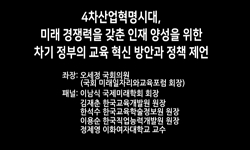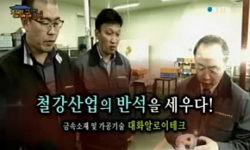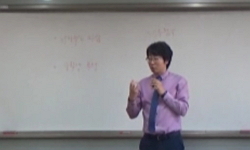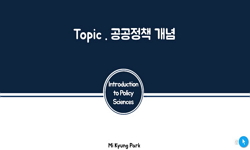대일 무역적자는 한국이 산업화를 시작한 이후 오늘날까지도 해결하지 못한 난제이다. 한일 기본조약을 체결한 1965년부터 현재까지 단 한 번도 대일 무역흑자를 기록한 해가 없었다. 지난 19...
http://chineseinput.net/에서 pinyin(병음)방식으로 중국어를 변환할 수 있습니다.
변환된 중국어를 복사하여 사용하시면 됩니다.
- 中文 을 입력하시려면 zhongwen을 입력하시고 space를누르시면됩니다.
- 北京 을 입력하시려면 beijing을 입력하시고 space를 누르시면 됩니다.

대구,경북 부품,소재산업의 경쟁력 향상을 위한 요인분석: 대일무역역조 시정을 중심으로 = An Analysis of Factors for Competitiveness of Materials and Components Industry in Daegu,Gyeongbuk: From the Perspectives of Reducing Trade Deficit with Japan
한글로보기https://www.riss.kr/link?id=A100726415
- 저자
- 발행기관
- 학술지명
- 권호사항
-
발행연도
2010
-
작성언어
-
-
주제어
대일 무역적자 ; 부품 ; 소재 산업 ; 의존 ; 경쟁력 ; 대응전략 ; 대구 ; 경북 ; 정책 ; Japan ; The Trade Deficit ; Materials and Components Industry ; Dependency ; Competitiveness ; Ooping Strategies ; Daegu ; Gyeongbuk ; Policy
-
KDC
0
-
등재정보
KCI등재
-
자료형태
학술저널
-
수록면
251-278(28쪽)
-
KCI 피인용횟수
0
- DOI식별코드
- 제공처
-
0
상세조회 -
0
다운로드
부가정보
국문 초록 (Abstract)
대일 무역적자는 한국이 산업화를 시작한 이후 오늘날까지도 해결하지 못한 난제이다. 한일 기본조약을 체결한 1965년부터 현재까지 단 한 번도 대일 무역흑자를 기록한 해가 없었다. 지난 1965년 1.3억 달러에 불과했던 대일 무역적자는, 한국의 대외 무역량이 증대함에 따라 지속적으로 증대했다. 즉, 무역 규모가 커지면 커질수록 대일 무역 적자 역시 비례해 늘어난 것이다. 2010년 상반기 우리나라의 대일본 수출액은 128억 3,000만 달러, 수입액은 309억 달러로, 180억 7,000만 달러의 적자를 기록했다. 상반기 180억 달러가 넘는 무역 적자는 우리나라가 일본과 교역을 시작한 이후 가장 큰 규모이다. 이미 2008년 한국의 대일(對日) 무역적자는 사상 처음으로 300억 달러를 돌파했었다. 지식경제부에 따르면 2009년 대일 무역적자의 72.7%가 부품·소재에 기인한다. 금액으로는 201억 달러에 이른다. 특히 반도체 등 IT 산업 분야에 쓰이는 핵심 소재는 대부분 일본에 의존하고 있어 대일 무역 적자의 40%가 소재 분야에서 발생하고 있다. 더 큰 문제는 부품·소재 분야의 대일 의존도가 갈수록 더심화되고 있다는 사실이다. 따라서 대일 무역적자 극복은 항상 새로운 정부 출범과 더불어 가장 중요하고 시급한 과제의 하나로 자리 잡은 지 오래다. 대일 무역적자를 극복하기 위해서는 일본에 보다 많은 완성품을 수출하거나 혹은 지금까지 일본으로부터 수입해 온 핵심 부품과 소재를 한국이 독자기술(기초기술)로 개발하여 국내조달 하는 수밖엔 없으나, 높은 기술력의 벽에 번번이 부딪히고 있다. 이 같은 상황에서 본 논문은 대일 무역역조의 원인을 부품소재 산업을 중심으로 분석하고, 부품소재 산업의 주요 무역품목에 대한 수출입 경쟁력을 구체적으로 분석 평가하고, 대일 무역역조 개선을 위한 국가적 지역(대구·경북)적 대응전략과 정책방안을 강구하는데 주요 목적이 있다. 부품소재 산업은 국가경제의 균형 발전에 중요한 역할을 담당하고, 경제 전체의 수출성과에 직접적으로 영향을 미치는 산업이다. 현재 국내 부품·소재 산업은 정부의 적극적인 육성정책과 주요 산업발전 등에 힘입어 외형적으로는 크게 성장하고 있는 추세다. 무역수지도 지속적으로 흑자가 확대되고 있고, 전반적인 경쟁력 지수도 꾸준히 개선되고 있다. 특히 경쟁력을 좌우하는 핵심 분야인 설계, 신제품 개발, 신기 술응용 기술이 크게 향상됐다. 세계시장 점유율도 2002년 9.2%에서 2008년 11.2%로 점진적인 증가세다. 부품·소재 산업구조도 범용 중심에서 IT 등 고부가가치 분야로 전환 중이다. 부품·소재 무역수지 흑자 순위를 보면 화학·합성섬유, 비철금속 등이 하위로 내려간 반면 LCD, 방송·무선통신기기 등이 상위로 올라왔다. 그러나 일본과의 관계만 놓고 보면 여전히 문제가 심각하다. 원천기술 취약으로 핵심 부품·소재를 일본에 의존하는 구조가 심화되고 있다. 특히 반도체 등 IT 분야 핵심 소재는 대부분 일본에서 수입해 쓰고 있는 실정이다. 대일 수입 비중이 큰 품목으로는 TAC필름(100%), 포토레지스트(93%), PI필름(90%), 포토스페이서(83%) 등을 들 수 있다. 한편 대구·경북지역은 기계부품산업의 훌륭한 발전적 입지를 가지고 있다. 구미의 전자산업과 포항의 철강산업, 울산과 창원의 조선과 기계산업, 부산과 울산의 자동차산업 등 대구·경북 인근 주변지역에 기계관련 연관산업이 잘 발달되어 있다. 대구지역 기계 및 메카트로닉스 산업의 핵심분야는 정밀가공기기, 자동차부품, 센서 및 엑츄에이터, 반도체제조장비 등이다. 이들 산업을 중심으로 금속(포항), 플라스틱, 유리(구미) 등이 공급 네트워크를 형성하고 있으며, 수요 네트워크는 기계류 제품(창원), 자동차(울산), 전자(구미) 등이 담당하고 있다. 그러나 대구·경북지역의 기계부품산업은 영세 중소기업의 비중이 높고, 단순 임가공 하청업체가 많은 데다, 비중이 높은 분야는 자동차부품, 조립금속, 알루미늄용기, 일반기계, 섬유기계 등인데 이들 부문에 대한 핵심기술이 부족하고, 생산성과 품질수준이 낮아 일본산 기계 수입비중이 높고, 일본의존형 기술이 많다. 따라서 대일 무역수지 적자요인으로 작용하고 있다. 현재 지식경제부는 세계 부품·소재 시장의 확대 추세에 대응하고 동북아 분업구조에서 유리한 위치를 점하기 위해서는 부품·소재 산업 경쟁력 제고가 시급하다는 판단을 내리고 있다. 따라서 대외 의존도 개선에 필수적인 핵심 부품·소재 자립화에 정책 역량을 집중한다는 전략이다. 이른바 ``선택과 집중``에 따른 육성 전략이다. 부품·소재 기업에 대해서는 대형화를 유도하는 한편 기술인력 지원을 통해 역량을 강화해나간다는 계획이다. 특히 부가가치 창출의 원천인 소재 산업 발전 대책을 집중적으로 강구하고 있다. 이미 한국 기업들이 일본에 비해 경쟁력 우위를 점한 분야도 적지 않다. 조선, 반도체, LCD, 대형 평판TV, 휴대전화 등은 일본 기업들을 상당한 차이로 앞지르고 있다. 특히 조선, 반도체 등은 한때 일본이 세계시장을 제패했던 분야였다. 부품소재산업에 대한 국가적 차원의 관심과 컨센서스는 철강소재를 기반으로 한 대구경북 부품소재산업의 기술혁신과 기술고도화, 전문화 및 지역철강산업의 발전에 중추적 역할을 담당할 ``금속소재산업진흥 원``의 설립계획에서도 확인할 수 있다. 특히 대구·경북의 경우 자동차·나노섬유 등의 분야도 강점이 있다. 자동선반, 스프링 설계 및 제작, 도금 및 열처리 관련, Press금형 순차이송금형, 선저도료 및 방오도료 전문 기술자 등에 대한 산업계 인력 수요도 최근에 늘고 있다. 결국, 대일무역역조의 근본적인 개선·해결을 위해서는 지역적 차원에서, 대구·경북의 중소 부품소재 및 자본재(전자기기, 자동차, 기계, 섬유, 반도체 제조장치, 정밀제어기계 분야 등)의 국산화 산업을 육성하여 수입 대체할 필요가 있다. 즉, 대일무역적자의 근본원인이 되는 수입부품 및 자본재를 제작·제조 하는 기술을 보유한 기업과 기술인재를 육성·확보할 필요가 있고, 국가적 차원에서, 핵심 부품·소재의 자립도를 획기적으로 높이거나 대일 수출을 늘리는 데 역량을 모아야 할 것이다. 정부의 부품·소재 종합대책(2009)에는 2018년까지 1조원을 투입해 세계적 경쟁력을 가진 10대 핵심소재를 개발하고, 선진국의 60% 선인 핵심소재 기술 수준을 90%까지 끌어올리며, 100대 수입 부품과 소재 중 각 10개를 골라 개발을 지원하는 자립화 기술개발 사업을 추진한다는 내용이 들어있다. 결국, 부품·소재산업을 키우는 것은 대일 무역역조 해소 차원을 넘어 우리 산업 전체의 경쟁력을 높이는 것이다. 세계 시장의 무한 경쟁 속에 살아남기 위해서도 반드시 성공시켜야 할 과제인 것이다.
다국어 초록 (Multilingual Abstract)
Trade deficit with Japan since the start of industrialization in Korea have not been resolved even today are the challenges. Since 1965, Japan trade surplus with Korea never changed. As South Korea``s foreign trade volume has steadily increased, trade...
Trade deficit with Japan since the start of industrialization in Korea have not been resolved even today are the challenges. Since 1965, Japan trade surplus with Korea never changed. As South Korea``s foreign trade volume has steadily increased, trade deficit with Japan grew bigger proportionally. In 1965 was only 0.13 billion trade deficit with Japan. Korean exports to Japan in the first half of 2010 accounted for $ 12.83 billion, imports 30.9 billion dollars, which resulted in 18.07 billion deficit. This amount records the largest trade deficit since the start of trading with Japan. In 2008, for the first time, trade deficit had surpassed 30 billion U.S. dollars. According to the Ministry of Knowledge Economy of Korea, in 2009 parts and materials are responsible for $ 20.1 billion, to 72.7% of the trade deficit. In Particular, the core materials such as the semiconductor in IT industries are the most dependent on Japan, accounting for 40% of the total trade deficit with Japan. To make things worse, parts and material dependence is increasingly deepening. Therefore, as one of the most important and urgent task to overcome trade deficit with Japan is always launched with the new government. It needs to export more finished goods to Japan or to substitute imported goods from Japan to domestic goods to overcome trade deficit with Japan. But, so far, Korean key components and materials industry couldn``t overcome the walls of high-technology. Under such circumstances, this thesis was devoted to analysis the causes of the trade deficit with Japan and the export competitiveness of main trade items of materials and components industry in Korea, and to seek after local/state strategies and policies reducing trade deficit with Japan. Parts and materials industry plays an important role in the development and export performance of the economy and the balanced development of the national economy. Domestic parts and materials industry seems to be in highly growing trend owing to the government``s active promotion policy and major industrial development. Map of the trade surplus has expanded continuously, and the overall competitiveness index is steadily improving. Key areas, such as design, new product development, new technology application have greatly improved. Global market share gradually increased in 2002 from 9.2% to 11.2% in 2008. Parts and materials industry structure is in transition. from universal sectors to highly value-added such as IT. But with regards to Japan still remains serious problems. Vulnerable to the core technology for the core parts and materials, industry structure dependent to Japan has been deepening. IT core material sector, such as the semiconductor is imported mostly from Japan. Main imported items include TAC film (100%), photoresist (93%), PI film (90%), photo spacers (83%). Daegu·Gyeongbuk has a great developmental position for the mechanical parts industry. Around this area, located well-developed machinery industry, such as the electronics industry in Gumi, steel industry in Pohang, shipbuilding and machinery industries in Ulsan and Changwon, the automotive industry in Busan, Ulsan. But most of the machine parts industries in Daegu·Gyeongbuk are small/medium enterprises, which are simple jobbing shop contractors. Highly proportioned core field such as automotive components, fabricated metals, aluminum containers, machinery, textile machinery lacks of skills and low levels of productivity and quality of machinery made it inevitable to import machinery from Japan. Thus, it has been acting as a factor of trade deficit with Japan. Currently, the Ministry of Knowledge Economy has determined that to respond to trends in expanding market for parts and materials in the world and to get the advantageous position in Northeast Asia division of labor is urgently needed competitiveness of parts and materials industry. Therefore, to improve the self-help policy strategy is essential to avoid the reliance on foreign key parts and materials. It``s so-called ‘selection and concentration`` strategy. National interest and consensus in parts and material industry can be found in the establishment plan of Pohang Institute for Metal Industry Advancement which will play a pivotal role in the development of parts and material industry based on innovation and technology advancement, specialization, and regional steel industry. Daegu·Gyeongbuk has a great advantage especially in car parts and nano-fibers. Labor demand in Automatic lathe, spring design and manufacturing, plating and heat-related, Press Mould Die sequential feed, bottom paint and antifouling paints is increasing recently. After all, to solve the problems of trade deficit with Japan, at the regional level, fostering of small parts and materials and capital goods (electronics, automotive, machinery, textile, semiconductor manufacturing equipment, precision control, mechanical engineering, etc.) are needed for the import substitution of parts and materials imported from Japan. At the national level, the degree of autonomy of the core parts and materials should be dramatically increased. Government``s Parts and Materials Comprehensive Plan (2009) will invest 1 trillion won up to 2018 to develope globally competitive 10 core material and to pull up from 60 percent technical level of the developed countries in core materials to 90%, to support the development of self-help technology of 10 out of 100 income parts and materials. After all, To develop parts and materials industries is not only to solve trade deficit with Japan, but also to increase the competitiveness of our industry as a whole. In order to survive in the global market competition, this challenge should be overcome.
참고문헌 (Reference)
1 "현대경제연구원"
2 이홍배, "한중일 일반기계산업의 구조적 특징과 FTA 대응방안" 한국동북아경제학회 18 (18): 1-30, 2006
3 이홍배, "한중일 일반기계산업의 구조적 특징과 FTA 대응방안" 한국동북아경제학회 18 (18): 1-30, 2006
4 임천석, "한중일 분업구조의 변화와 한국의 대응과제" 한국동북아경제학회 13 (13): 1-29, 2001
5 정인교, "한중일 FTA 경제효과와 추진 여건 분석" 한국동북아경제학회 17 (17): 1-26, 2005
6 정인교, "한중일 FTA 경제효과와 추진 여건 분석" 한국동북아경제학회 17 (17): 1-26, 2005
7 김창남, "한국의 금융위기와 한, 일 경제관계" 한국동북아경제학회 10 (10): 71-97, 1998
8 "한국무역협회"
9 정대철, "한국과 일본 기계산업의 전략적 협력방안: 한일해협권 기계산업의 협력방안을 중심으로" 한국정책학회 16 (16): 93-114, 2007
10 정대철, "한국과 일본 기계산업의 전략적 협력방안: 한일해협권 기계산업의 협력방안을 중심으로" 한국정책학회 16 (16): 93-114, 2007
1 "현대경제연구원"
2 이홍배, "한중일 일반기계산업의 구조적 특징과 FTA 대응방안" 한국동북아경제학회 18 (18): 1-30, 2006
3 이홍배, "한중일 일반기계산업의 구조적 특징과 FTA 대응방안" 한국동북아경제학회 18 (18): 1-30, 2006
4 임천석, "한중일 분업구조의 변화와 한국의 대응과제" 한국동북아경제학회 13 (13): 1-29, 2001
5 정인교, "한중일 FTA 경제효과와 추진 여건 분석" 한국동북아경제학회 17 (17): 1-26, 2005
6 정인교, "한중일 FTA 경제효과와 추진 여건 분석" 한국동북아경제학회 17 (17): 1-26, 2005
7 김창남, "한국의 금융위기와 한, 일 경제관계" 한국동북아경제학회 10 (10): 71-97, 1998
8 "한국무역협회"
9 정대철, "한국과 일본 기계산업의 전략적 협력방안: 한일해협권 기계산업의 협력방안을 중심으로" 한국정책학회 16 (16): 93-114, 2007
10 정대철, "한국과 일본 기계산업의 전략적 협력방안: 한일해협권 기계산업의 협력방안을 중심으로" 한국정책학회 16 (16): 93-114, 2007
11 이코노미플러스, "한국 제조업 ‘극일' 가까워졌나?"
12 한국경제신문, "한국 소재산업 육성방안, 7월 19일"
13 한국산업은행, "한ㆍ중ㆍ일 주요산업의 기술경쟁력 분석" 2004
14 대구매일, "포항, 금속소재산업진흥원 설립, 8월 1일"
15 "지식경제부"
16 정만태, "조립금속산업의 경쟁력 실태분석 및 발전방안" 산업연구원 2002
17 김성철, "일반기계 산업의 수출경쟁력 분석과 시사점 -중국, 미국, 일본시장을 중심으로-" 한국동북아경제학회 20 (20): 33-55, 2008
18 김성철, "일반기계 산업의 수출경쟁력 분석과 시사점 -중국, 미국, 일본시장을 중심으로-" 한국동북아경제학회 20 (20): 33-55, 2008
19 "삼성경제연구원"
20 "산업연구원"
21 조철, "부품ㆍ소재산업의 세계 일류화 전략과 정책과제" 산업연구원 2007
22 한국관세청, "무역통계연보"
23 심승진, "동아시아지역의 산업특화 구조분석" 국제지역학회 10 (10): 439-460, 2006
24 심승진, "동아시아지역의 산업특화 구조분석" 국제지역학회 10 (10): 439-460, 2006
25 조윤기, "동북아지역 국가들의 철강산업 효율성 및 경쟁력변화 분석 -한국, 일본, 중국, 대만을 중심으로-" 한국동북아경제학회 20 (20): 1-24, 2008
26 조윤기, "동북아지역 국가들의 철강산업 효율성 및 경쟁력변화 분석 -한국, 일본, 중국, 대만을 중심으로-" 한국동북아경제학회 20 (20): 1-24, 2008
27 영남일보, "대구의 산업공단, 8월 6일"
28 이춘근, "대구산업구조의 특성과 발전비전"
29 동아일보, "기업이 한국 떠난다면 노조는 누구와 싸울 건가, 7월 13일"
30 한국기계산업진흥회, "기계산업통계월보"
31 김광희, "韓国自動車部品産業における対日競争力の現状と その対応戦略に関する考察" 한일경상학회 41 : 227-252, 2008
32 金昌男, "韓国経済発展論" 勁草書房 1996
33 金昌男, "韓国政府の通商政策課題/と韓日FTAの戦略的重要性" (1) : 2008
34 大前研一, "ニュースの視点. 3月 21日"
35 Dong-A Daily, "With Whom Will Fight the Union with Companies Leaving Korea?, July 13"
36 "Trade Statistics Yearbook" Korea Customs Service and Customs Institute
37 Kim, C.N., "Trade Policy Challenges of Korean Government and Strategic Importance of Korea-Japan FTA" (1) : 2008
38 Daegu Daily, "The Establishment of Pohang Institute of Metal Industry Advancement, August 1"
39 Lee, C.G., "Structural Characteristics of Daegu's Industry and Development Vision"
40 Im, C.S., "Structural Changes of Korea-China-Japan's Division of Labour and Our Challenge response" The Northwest Asia Economic Association of Korea 13 (13): 1-29, 2001
41 Clark, Jim B., "Product Development Performance" Harvard Business School Press 1991
42 Omae Genitzi, "News Perspective"
43 Korea Association of Machinery Industry, "Monthly Statistics of Machinery Industry"
44 Cho C., "Materials and Components Industry's World Best Strategy and Policy Challenges" The Korea Institute for Industrial Economics and Trade 2007
45 "LG경제연구원"
46 Economy Plus, "Korean Manufacturing Overcome Japan's Obstacles?"
47 Dyer, Jeffrey H., "Japanese-Style Partnerships: Giving Companies a Competitives Edge" 1993
48 "Homepage of the Korea International Trade Association"
49 "Homepage of the Korea Institute for Industrial Economics and Trade"
50 "Homepage of Samsung Institute for Economics"
51 "Homepage of Ministry of Knowledge and Economy of Korea"
52 "Homepage of LG Institute for Economics"
53 "Homepage of Hyundai Institute for Economics"
54 Kim, C.N., "Finantial Crisis of Korea and Korea-Japan Economic Relations" The Northwest Asia Economic Association of Korea 10 (10): 71-97, 1998
55 Kim, C.N., "Development theory of Korean Economy" Keiso Shobo 1996
56 Korea Economic Newspaper, "Development Plan of Korean Component Industry, July 19"
57 Youngnam Daily, "Daegu's Industry Complex, August 16"
58 Kim, K.H., "Competitiveness of Korean Car Component Industry to Japan and Coping Strategies" 41 : 227-252, 2008
59 Korea Development Bank, "An Analysis of Technical Competitiveness of Main Industries of Korea, China, and Japan" 2004
60 Jung, M.T., "An Analysis of Competitiveness of Fabricated Metal Industry and Development Plan" The Korea Institute for Industrial Economics and Trade 2002
61 한국산업은행, "2005 한국의 산업-부품·소재산업편" 2005
62 Korea Development Bank, "2005 Korean Industries: Materials and Components Industry" 2005
동일학술지(권/호) 다른 논문
-
- 아시아.유럽미래학회
- 김호원 ( Ho Won Kim )
- 2010
- KCI등재
-
- 아시아.유럽미래학회
- 김정권 ( Jeong Gwon Kim )
- 2010
- KCI등재
-
- 아시아.유럽미래학회
- 황혜진 ( Hae Jin Hwang )
- 2010
- KCI등재
-
정보시스템이 기업의 전략, 고객만족과 기업성과에 미치는 영향에 관한 연구: 미국의 말콤볼드리지 국가품질상을 중심으로
- 아시아.유럽미래학회
- 이장우 ( Jang Woo Lee )
- 2010
- KCI등재
분석정보
인용정보 인용지수 설명보기
학술지 이력
| 연월일 | 이력구분 | 이력상세 | 등재구분 |
|---|---|---|---|
| 2022 | 평가예정 | 재인증평가 신청대상 (재인증) | |
| 2019-01-01 | 평가 | 등재학술지 유지 (계속평가) |  |
| 2016-01-01 | 평가 | 등재학술지 유지 (계속평가) |  |
| 2012-01-01 | 평가 | 등재학술지 선정 (등재후보2차) |  |
| 2011-01-01 | 평가 | 등재후보 1차 PASS (등재후보1차) |  |
| 2009-01-01 | 평가 | 등재후보학술지 선정 (신규평가) |  |
학술지 인용정보
| 기준연도 | WOS-KCI 통합IF(2년) | KCIF(2년) | KCIF(3년) |
|---|---|---|---|
| 2016 | 0.55 | 0.55 | 0.47 |
| KCIF(4년) | KCIF(5년) | 중심성지수(3년) | 즉시성지수 |
| 0.47 | 0.46 | 0.727 | 0.13 |




 KCI
KCI eArticle
eArticle






